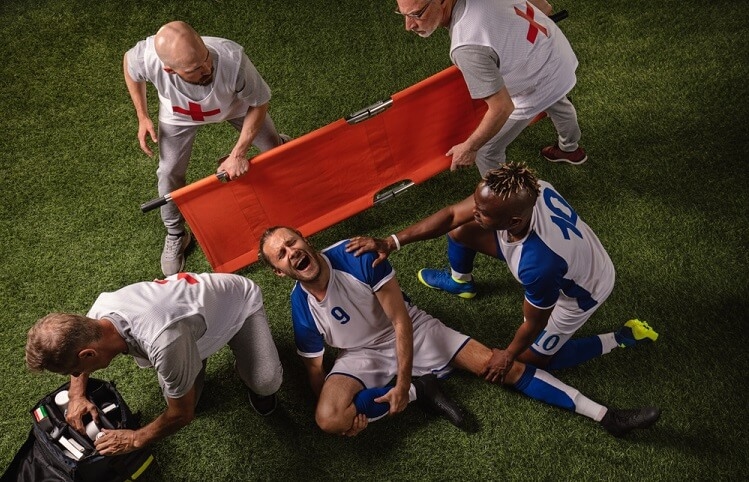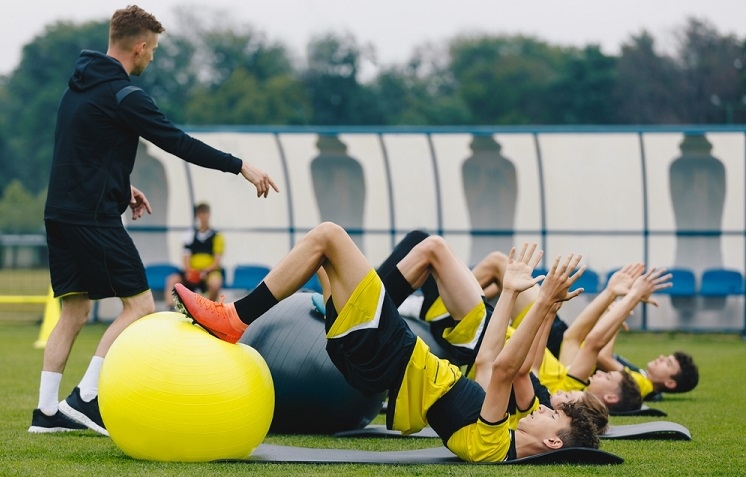
Close
There is no doubt that soccer is one of the most popular international team sports in the United States and is growing in popularity every year. In some cases, individuals who play soccer can suffer injuries as a result of increasing their participation in the sport.
The fans who are present at soccer games are energetic and eager to cheer on their team whenever their team scores a goal. While it is important for the teams and audience to be aware of the severity of an injury that may be sustained by a soccer player following a fall, blow, or collision with another player, the majority still worry about it.
The types of injuries that occur in soccer tend to be divided into two categories based on their severity: acute injuries and cumulative injuries. An acute injury is determined by the force of the blow, whereas cumulative injuries can be the result of repetitive stress on a muscle, joint, or connective tissue triggered over time, which can lead to continually worsening aches, pains, and impairments.

Sprains and strains are the most common types of injuries that cause injuries to the lower extremities. There are different levels of severity associated with different injuries. Acupuncture can be required for several types of knee injuries, including cartilage tears and back sprains of the anterior cruciate ligament (ACL). It is also possible to sustain injuries to the body by direct blows that result in fractures or contusions all over the body.
In many cases, soccer players suffer from overuse injuries that are predominantly related to their legs, such as shin splints (calf pain), patellar tendinitis (knee pain), and Achilles tendinitis (back pain). A soccer player might also be subject to either groin pulls or muscle strains in their legs, which can occur in the thigh muscles as well as in the calf muscles.
There are cases when stress fractures occur when the bones become weak in response to overuse as a result of stress. There are many instances when it can be difficult to differentiate between a stress fracture and a soft tissue injury. Whenever a person is experiencing pain in any part of their lower extremity after being rested for a few days, it is best to consult their physician in order to determine whether a stress fracture is present.
When someone falls on an outstretched arm or when they are hit by another player, it is usually an upper extremity injury that is sustained. The most common injuries that occur are sprained wrists, fractures, and dislocated shoulders.
There are many types of injuries that can come to one's head, neck, or face, including cuts and bruises, fractures, neck sprains, and concussions. In order to avoid any long-term mental health consequences, athletes who suffer a concussion need to get medical attention as soon as possible after suffering trauma to the head.
There is a need to stop participating in sports immediately if you feel you have been injured and to have the injury evaluated and treated properly. It is usually enough to rest, apply ice and elevate the injured area for most minor injuries to heal within a few days. Oftentimes, a sports medicine physician or athletic trainer will be able to make a decision that allows an athlete to continue playing immediately if they are able to evaluate the injury with the help of a trained healthcare professional. After receiving clearance from a healthcare professional, the athlete should only return to play once the athlete has been cleared to return by that professional.
When an athlete has a short period of rest after an overuse injury, they will be able to do some activities with modifications. It is vital that you do not push through the pain when you are suffering from an injury such as a stress fracture, knee ligament tears, or head and neck injuries. It is important to realize that the healing of any injury may take more than a few days of rest if it fails to improve. A proper diagnosis and treatment can only be provided by a doctor. Prior to returning to the playing field, you will need to get clearance from a healthcare professional.

It is very important that you are in good physical condition before you start the soccer season. Creating a fitness program that combines exercises, strength training, and flexibility can be an effective method to keep you in shape during the off-season. If you are not in shape at the beginning of the season, slowly increase your activity level and build up your activity level as you progress through the course of the season.
It is important that you warm up properly before you begin. People who suffer from a cold are more likely to suffer from muscle injuries as a result of their cold. Research studies have proven this to be true, as shown in the following paragraphs. Start your warm-up by jumping jacks, running, or walking in place for three to five minutes, and warm up before you begin your workout. Stretching can be included in many warm-ups in which the specific sport or position that is being warmed up is not mentioned. As you warm up, hold each of the stretches for 30 seconds as you move from one to another. The best way to stretch is to do so slowly and gently. Stretching in a ballistic, bouncing manner is not recommended, as it may result in injuries.
The practice of stretching at the end of practice is often neglected due to the busy schedules of athletes. A number of benefits can be reaped from stretching, namely a reduction in muscle soreness and maintaining muscle flexibility and length. Stretching after every training session is one of the best ways to reduce your chances of getting injured.

Even at mild levels of dehydration, it is possible for dehydration to negatively affect athletic performance. When you do not drink enough fluids during the day, you will not be able to cool yourself effectively through sweat and evaporation. There is generally a recommendation that you drink 24 ounces of non-caffeinated fluid two hours before you exercise in order to prevent dehydration. The water of the sports drink, or eight ounces of water, should also be consumed before you begin your workout. Water should be consumed at intervals of every 30 minutes by taking a break to drink an 8-ounce glass.
By wearing shin guards, you will be able to protect the lower legs of your body. The majority of lower leg injuries in soccer tournaments can be attributed to the absence of adequate shin guards. You must make sure that the shoe soles have rubber or molded cleats as part of the shoe design. Shoes that have screw-in cleats are more likely to cause an injury as there is a higher chance of getting injured. Wearing shoes that have screw-in cleats is a good idea if you are playing on a field that is wet or has tall grass. This will provide you with more traction.
A synthetic, non-absorbent ball should be used for the play of football on wet playing fields. Several types of leather balls can become waterlogged and heavy when they become wet, posing a high risk of injury to players.
It is important to know that soccer is a sport that is prone to injuries, just like many other sports. Most soccer injuries are sustained to the lower part of the body, mainly the ankles and legs, which are the most commonly injured parts of the body. Injuries may be caused by a number of factors, including overuse, inaccurate landings, sudden movements, and collisions with teammates who are playing the same sport. It is important to know what you should do in case of an injury.
It is the delight of the soccer player when he hears "Goal" during a game. However, it is a surprise when the soccer player is injured and is forced to suspend his playing days for the remainder of his health. In order to return to play more quickly, athletes should be aware of any signs of injury in their bodies through conditioning and training and acknowledge any signs of distress when they do occur. When their healthcare providers and coaches approve, athletes can return to play more quickly.